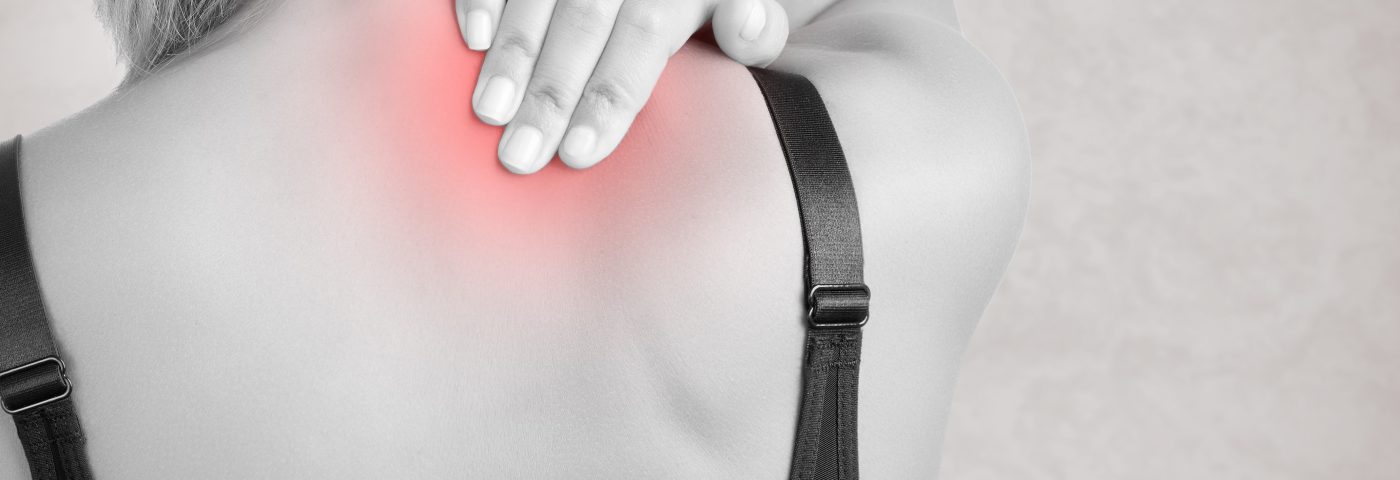A new method based on thumbnail pressure has been developed to monitor conditioned pain modulation (CPM). Patients, such as those with fibromyalgia (FM) who require long-term and frequent assessment of pain responses, should welcome the new, simpler test.
CPM is a model where a conditioning stimulus is used to influence a test stimulus in the context of pain responses. In healthy people, the application of a painful stimulus to one part of the body often reduces pain experienced in another part of the body. For patients with FM, or those with other chronic pain disorders, this process is often impaired. Inefficient CPM also is associated with increased use of pain management strategies, such as analgesic use.
In the study “A novel paradigm to evaluate conditioned pain modulation in fibromyalgia,” published in the Journal of Pain Research, researchers developed a new method to evaluate CPM that “can be performed longitudinally in nearly any setting with minimal participant burden.”
A standard test for CPM involves the application of two painful stimulus including pinching, pressure, or exposure to hot or cold temperatures. The new paradigm for CPM uses pressure applied to the dominant thumbnail (conditioning) for 60 seconds. Then pressure is applied to the non-dominant (test) thumbnail and pain is rated on a scale of 0-100, with 100 describing the most severe pain. This is the first model where the same stimulus is used in both conditioning and testing settings.
The researchers enrolled 16 right-handed female FM patients between the ages of 24 and 57. To be eligible, these women had a clinical pain score of greater than 40 on a 100-point scale (0=no pain, 100=worst pain). As a control group, 14 age-matched healthy females also were enrolled.
The researchers compared their model with an established alternative. In all cases, thumbnail pressure was used as the test stimulus. As conditioning stimulus, study participants were exposed to either cold water or thumbnail pressure. The difference in pain rating of the test stimulus applied before and during the conditioning stimulus was used to evaluate if CPM was intact or impaired.
Results from this study suggest that “using pressure pain as both a conditioning and test stimulus can identify intact CPM in healthy subjects, as well as attenuated CPM in FM patients.”
In healthy controls, intact CPM was identified by a significant decrease in the means of test stimulus pain ratings during both thumbnail pressure pain conditioning, as well as cold-water conditioning. In contrast, there were no significant changes in the pain ratings of test stimulus before or after the conditioning stimulus in FM patients.
Within each group (healthy and FM patients), there were no significant differences between the two conditioning stimuli assessed, suggesting that “pressure pain conditioning stimulation applied to the thumbnail is at least as effective as cold water immersion of the hand for inducing CPM,” the study found.
This study assessed only a small sample size, and not every healthy female showed intact CPM. Likewise, not every FM patient displayed impaired CPM. Additional studies evaluating more patients, while also taking into consideration additional psychosocial factors and the use of medications by FM patients, are necessary.
Nonetheless, the authors concluded the study “demonstrates that thumbnail pressure can be used as both a test and conditioning stimulus in the assessment of CPM. This study further confirms previous findings of attenuated CPM in FM patients compared with healthy controls.”

